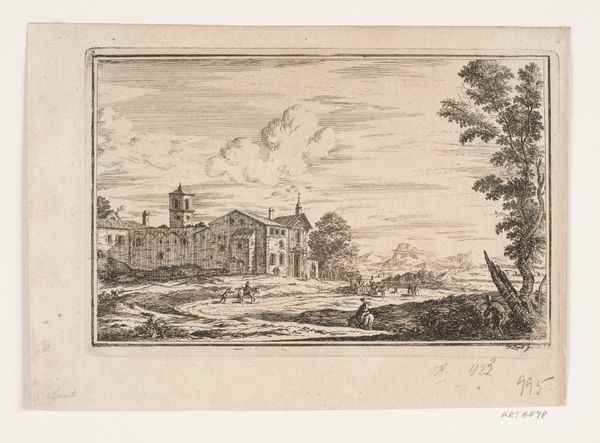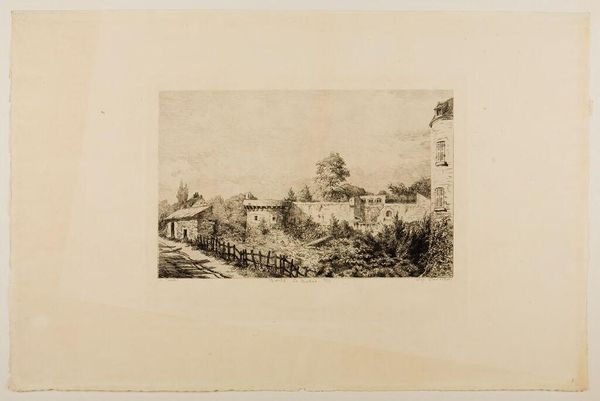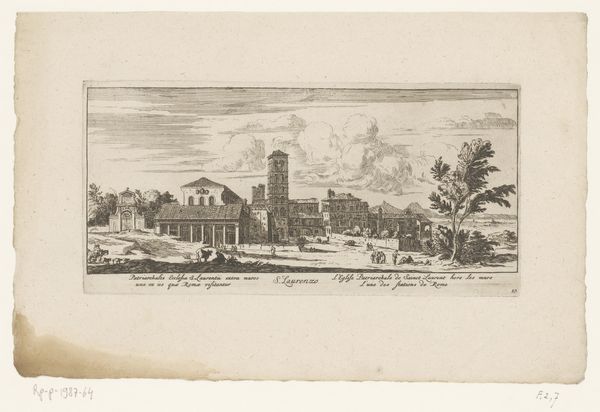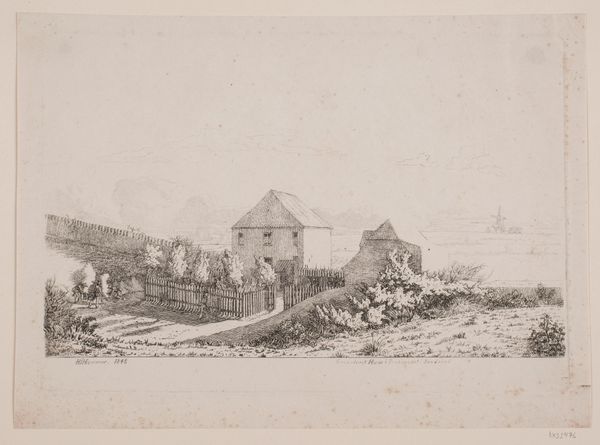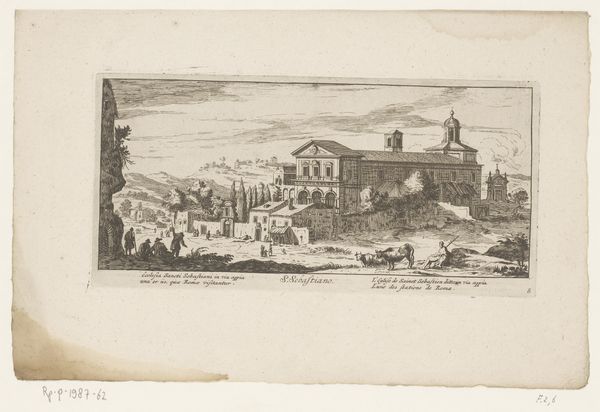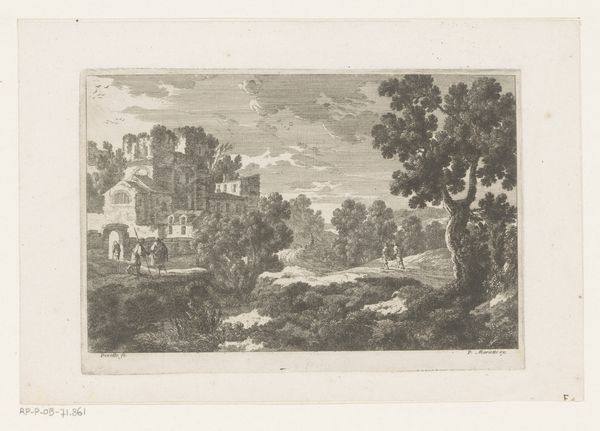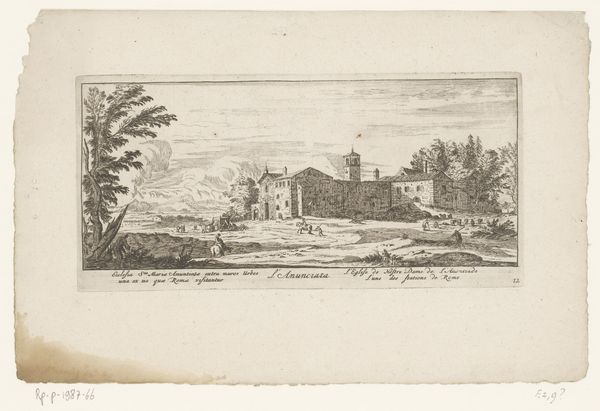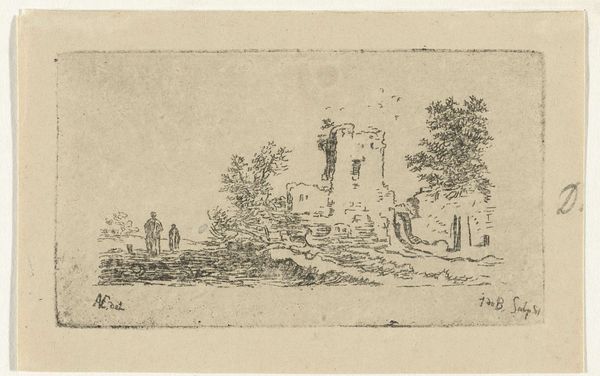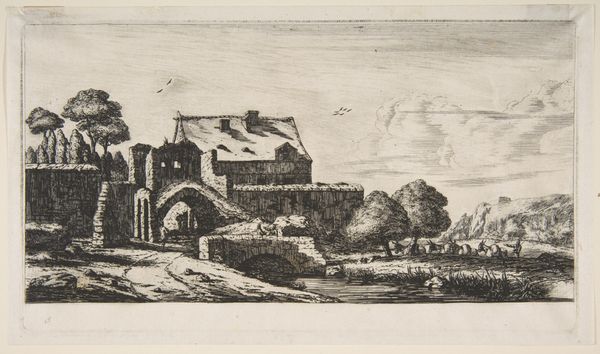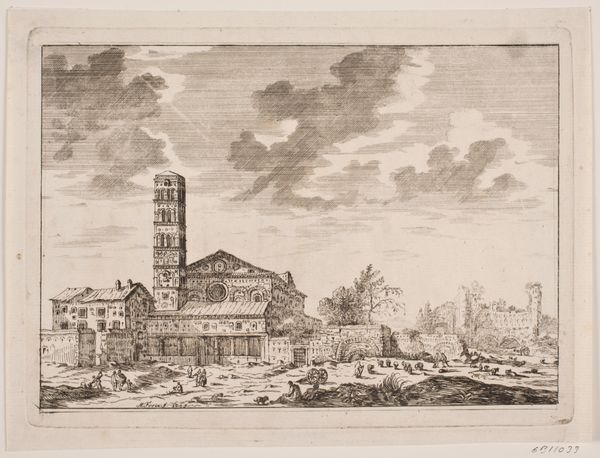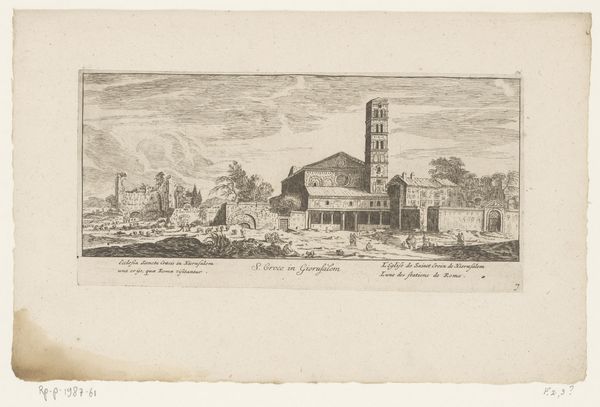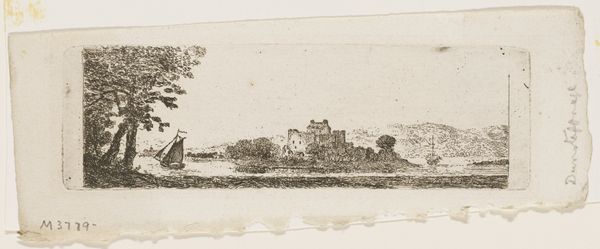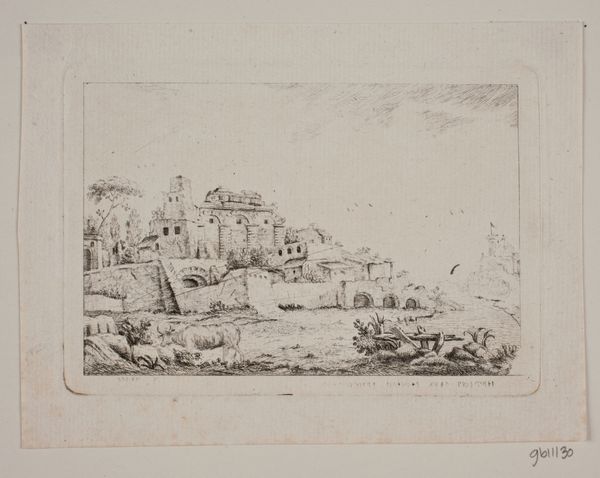
print, etching
# print
#
etching
#
landscape
#
cityscape
Dimensions: 81 mm (height) x 124 mm (width) (plademaal)
Curator: What strikes me immediately about this image, "Koldinghus' ruiner," is this delicate melancholic beauty. It’s an etching—so a print—that, dating between 1859 and 1921, seems to capture a world suspended in time. What are your first impressions? Editor: A fortress rising from the landscape like a memory, perhaps? I’m immediately drawn to the imposing central structure and its contrast with the seemingly undisturbed natural elements surrounding it. The symbolism of ruins…what’s been lost, what remains, that conversation intrigues me. Curator: The conversation is so potent here. Notice how the light gently caresses the ruined facade, highlighting the textures, almost as if telling tales etched into stone. The artist's use of etching enhances this fragility. Editor: Absolutely. The use of the medium here speaks volumes—etching's historical significance mirrors the weight of history represented in the subject itself. Look at how the artist plays with depth using line work; a tapestry of density versus open space, creating both foreboding and inviting elements. Symbolically, light and shadow create space for rebirth amid destruction. Curator: Indeed, a tapestry! You see how trees frame the ruin on either side? To me they feel like protective spirits, witnesses to what was and guardians of what will be. And there’s a beautiful touch of wildness creeping up. Nature’s embrace. Editor: The visual motif of nature reclaiming its space offers resilience in face of mortality. Buildings and walls crumble, while living beings regenerate, constantly reminding us that nothing, no matter how powerful, remains eternal. What do you think is emphasized more: the castle or surrounding area? Curator: I think the surrounding area provides context and grounding for what feels like, in this print, a kind of memorial—a poignant visual elegy, perhaps. There's a cyclical nature present and an inevitability to the landscape consuming the site, even reclaiming what remains of it. It's hauntingly gorgeous. Editor: I concur. The dialogue between structure and wild speaks to enduring legacies and impermanence of power. What starts as architecture slowly molds itself into landscape as centuries fade away. It serves as reminder that histories can blend while memory outlasts decay, taking on meanings that go well past immediate observation. Curator: Beautifully said. And it just adds to that gentle melancholic feel, a reflection that there's profound beauty and perhaps even peace to be found, right here in this convergence. Editor: Agreed. This print transcends just a landscape image; it embodies transience through visual metaphor that continues whispering today, even through these fine lines on this very piece of paper.
Comments
No comments
Be the first to comment and join the conversation on the ultimate creative platform.
